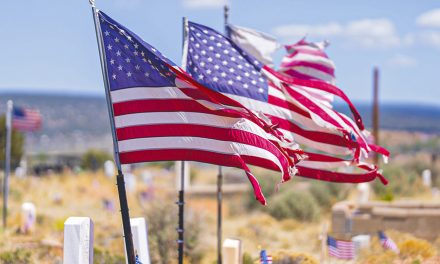
Guest Column | Historical tidbits about Native American month
By Teddy Begay
A quick history about Native American Heritage Month: in 1916, the 24-state government established the very first “American Indian Day.”
Then in 1976, it evolved into “Native American Awareness Week,” then back to “American Indian Day” in 1986, “American Indian Week” in 1986, and finally by a joint resolution designated November 1990 as “National American Indian Heritage Month.”
It went from one day, to one week, to one month brought on by a national movement since the 1970s.
The whole month of November celebrates awareness about Native American Heritage Month with Alaskans and Hawaiians Native peoples.
There are 574 federally recognized tribes with hundreds of different languages and cultures that are as unique as the people they represent. Embraced by all Native Americans, November is commemorated to appreciate their contributions, as well as learn from them.
European Americans are surprisingly finding that Native American history, their traditional knowledge, wisdom and culture, are not stereotypically strange or bizarre as once thought. But they are unique, resonating a legacy of proud people and, curiously enough, the theme of 2021 is “Gifts of Our Ancestors: Celebrating Indigenous knowledge and Cultures.”
The Native American Heritage Month is also an opportune time to educate the public about different tribes to raise awareness about the unique challenges Native people have faced both historically, currently and the ways in which tribal citizens have worked to overcome these challenges.
Additionally, historians believe that the U.S. Constitution was modeled after the the “Great Law of Peace,” the constitution of the Iroquois Confederacy.
Research has revealed that Benjamin Franklin studied it in detail and had to go to the source with the Six Nations of Iroquois when he was helping co-found the establishment of early America’s government.
Other historical facts: It wasn’t until 1924 that Native Americans were granted citizenship after Congress enacted the Indian Citizenship Act. While Native Americans were also given the right to vote in 1924, it took another 40 years (1964) for all 50 states to allow them voting rights.
A rekindled interest in Native affairs came to the forefront due to their patriotic duties performed in military service. During World War I, Native troops played significant combat roles in strategic battlefields and code talkers did distinguished service for this country.
Again, in World War II, the U. S. government enlisted the help of Native Americans, among them the Navajos served with a Marine Signal Unit known as “Code Talkers” in the Pacific to transmit top-secret information to allied forces from the front lines.
Much of this information was classified until 1968 and in 2002 Congress passed the Code Talkers Recognition Act. Overall, some tribes had as much as 70% participation in the war effort.
Currently, Navajos, one of the largest tribes in America, call themselves Diné, which means “The People.” We honor Native American Heritage Month to memorialize the past as survivors, still resilient and strong, preserving our rich culture and history to acknowledge the importance of safeguarding the language, traditional knowledge and wisdom.
Education, once a “compulsory policy” for boarding school attendance, was mandated in 1887. However, it exposed many injustices, i.e., genocide of Native identities, deeming education was more important than their heritage in the way it was introduced. The intentional taking young students away from their homes left a dark period that alienated them from their people and fomented a change by the U.S. government.
Today, education has turned around with Native teachers and political support to honor our way of life instead of using it to take away our culture.
Now, it is of utmost importance to take advantage. The focus is on who we are as Native Americans, and how to maintain the legacy and heritage of our ancestry.
We derive our strength, resilience, dignity, and respect from our elders, which are still intact. There was a time celebrating any remembrance or practice of our ceremonial ways were not allowed and we hope it remains as bygone days.
We still sing our traditional songs, pass down our oral stories, ceremonial dances and rituals. If we cannot sing and dance to perform our ceremonies, we will become a sad people.
When people say, “they’re just that way,” it means “it is in-born,” existing from birth. In other words, it is hereditary inherited in our genes when a young girl is beaming with a smile at a powwow. Philosophically, Navajos and all Native Americans are spiritual people in their beliefs.
Included most of all is taking care of our home – Mother Earth – where we live.
Among the many tenets, the elders remind their youth, “No matter how much you have, you always have enough to share.” This traditional wisdom of our ancestry is a long-standing custom among Navajo hataa?ii (medicine men), our “keepers of sacred knowledge” to maintain hózhó (happiness).
This knowledge has survived generations of conflicts and our foremothers have placed it upon us to pass it to our young to continue it.
Finally, to recap the noteworthy point that needs to be known, all Native Americans must wake up from complacency and understand the most significant gift of our ancestors: the world should learn about the original stewards of the land; Indigenous people have ecological and economic benefit for all mankind.
These historical and contemporary tidbits are only the tip of the iceberg. We are like any other people on Mother Earth – surviving on a precious code of belief that we will continue to strive to be better and practice that ideology throughout our lives.
Ahxéhee’ shi Dine’é.








 Highway 264,
Highway 264, I-40, WB @ Winslow
I-40, WB @ Winslow